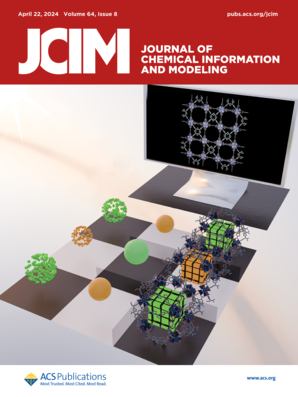基于自适应硬度负抽样和自适应图多重卷积的代谢-疾病关联预测。
IF 5.6
2区 化学
Q1 CHEMISTRY, MEDICINAL
引用次数: 0
摘要
代谢物是机体代谢过程中产生的小分子,其浓度异常与各种疾病的发生和发展密切相关。准确预测代谢物与疾病的关联对于早期诊断、机制探索和治疗优化至关重要。然而,现有算法在处理异构图时往往忽略了节点特征的整合,忽略了不同跳域对节点的影响。此外,目前的方法仅依靠随机抽样来选择负样本,而不考虑其可靠性,从而影响了模型的稳定性。一种新的代谢物-疾病关联预测模型GMAMDA被提出来解决这些挑战。GMAMDA集成了自适应硬度负采样、自适应图多重卷积技术和多异质图融合策略来预测潜在的代谢物疾病关联。首先,通过计算代谢物和疾病的多源相似度信息,建立代谢物-疾病关联网络的多个异构图网络。随后,利用自适应图的多卷积机制,通过动态利用来自不同跳域的信息,在各种异构图中生成特征丰富的节点表示。然后,该模型利用基于主成分分析的自适应硬度负采样方法,选择信息量最高的负样本进行训练,从而预测新的代谢物与疾病之间的潜在关联。实验结果表明,GMAMDA在AUC(0.9962±0.0014)、AUPR(0.9967±0.0009)和准确率(0.9733±0.0042)等多个评价指标上都优于最先进的方法。针对阿尔茨海默病和肾脏疾病的案例研究进一步验证了GMAMDA在预测代谢物标志物方面的临床潜力。本文章由计算机程序翻译,如有差异,请以英文原文为准。
GMAMDA: Predicting Metabolite-Disease Associations Based on Adaptive Hardness Negative Sampling and Adaptive Graph Multiple Convolution.
Metabolites are small molecules produced during organism metabolism, with their abnormal concentrations closely linked to the onset and progression of various diseases. Accurate prediction of metabolite-disease associations is crucial for early diagnosis, mechanistic exploration, and treatment optimization. However, existing algorithms often overlook the integration of node features and neglect the impact of different hop domains on nodes in the processing of heterogeneous graphs. Furthermore, current methods solely rely on random sampling for selecting negative samples without considering their reliability, thereby compromising model stability. A novel metabolite-disease association prediction model, GMAMDA, is proposed to address these challenges. GMAMDA integrates adaptive hardness negative sampling, adaptive graph multiple convolution techniques, and a multiheterogeneous graph fusion strategy to forecast potential metabolite-disease associations. Initially, by computing multisource similarity information for metabolites and diseases, multiple heterogeneous graph networks are established for metabolite-disease association networks. Subsequently, the adaptive graph's multiconvolution mechanism is employed to generate feature-rich node representations across various heterogeneous graphs by dynamically leveraging information from different hop neighborhoods. The model then utilizes an adaptive hardness negative sampling approach based on principal component analysis to select negative samples with the highest information content for training, enabling the prediction of potential associations between new metabolites and diseases. Experimental findings demonstrate that GMAMDA outperforms state-of-the-art methods across various evaluation metrics, including AUC (0.9962 ± 0.0014), AUPR (0.9967 ± 0.0009), and accuracy (0.9733 ± 0.0042). Case studies focusing on Alzheimer's disease and kidney disease further validate GMAMDA's clinical potential in predicting metabolite markers.
求助全文
通过发布文献求助,成功后即可免费获取论文全文。
去求助
来源期刊
CiteScore
9.80
自引率
10.70%
发文量
529
审稿时长
1.4 months
期刊介绍:
The Journal of Chemical Information and Modeling publishes papers reporting new methodology and/or important applications in the fields of chemical informatics and molecular modeling. Specific topics include the representation and computer-based searching of chemical databases, molecular modeling, computer-aided molecular design of new materials, catalysts, or ligands, development of new computational methods or efficient algorithms for chemical software, and biopharmaceutical chemistry including analyses of biological activity and other issues related to drug discovery.
Astute chemists, computer scientists, and information specialists look to this monthly’s insightful research studies, programming innovations, and software reviews to keep current with advances in this integral, multidisciplinary field.
As a subscriber you’ll stay abreast of database search systems, use of graph theory in chemical problems, substructure search systems, pattern recognition and clustering, analysis of chemical and physical data, molecular modeling, graphics and natural language interfaces, bibliometric and citation analysis, and synthesis design and reactions databases.

 求助内容:
求助内容: 应助结果提醒方式:
应助结果提醒方式:


